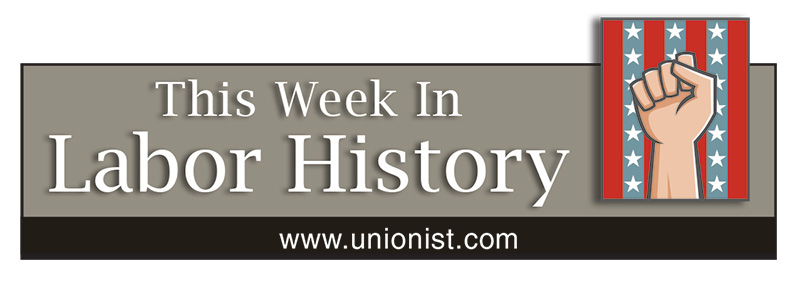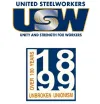This week in labor history: January 2-8

JANUARY 2
1905 – Conference of 23 industrial unionists in Chicago leads to formation of IWW, the Industrial Workers of the World, also known as Wobblies.
1920 – In what became known as Palmer Raids, Attorney General Mitchell Palmer arrests 4,000 foreign-born labor activists. He believed Communism was “eating its way into the homes of the American workman,” and Socialists were causing most of the country’s social problems.
2006 – An underground explosion at Sago Mine in Tallmansville, W. Va., traps 12 miners and cuts power to the mine. Eleven men die, mostly by asphyxiation. The mine had been cited 273 times for safety violations over the prior 23 months.
JANUARY 3
1852 – The ship Thetis arrives in Hawaii with 175 Chinese field workers bound to serve for five years at $3 per month.
1949 – The Supreme Court rules against the closed shop, a Labor-management agreement that only union members can be hired and must remain members to continue on the job.
1981 – AFL-CIO American Institute for Free Labor Development employees Mike Hammer and Mark Pearlman are assassinated in El Salvador along with a Peasant Workers’ Union leader with whom they were working on a land reform program.
JANUARY 4
1961 – What many believe to be the longest strike in modern history, by Danish barbers’ assistants, ends after 33 years.
1965 – Eight thousand New York City social workers strike, demanding better conditions for welfare recipients.
1999 – United Paperworkers Int’l Union merges with Oil, Chemical & Atomic Workers Int’l Union to form Paper, Allied-Industrial, Chemical & Energy Workers Int’l Union, itself later to merge with the Steelworkers.
JANUARY 5
1869 – The nation’s first labor convention of Black workers was held in Washington, D.C., with 214 delegates forming the Colored National Labor Union.
1914 – Ford Motor Company raises wages from $2.40 for a nine-hour day to $5 for an eight-hour day in an effort to keep the unions out.
1933 – Construction of the Golden Gate Bridge begins. Ten of the 11 deaths on the job came when safety netting beneath the site — the first-ever use of such equipment — failed under the stress of a scaffold that had fallen. Nineteen other workers were saved by the net over the course of construction. They became members of the (informal) Halfway to Hell Club.
JANUARY 6
1882 – The Toronto Trades and Labour Council endorses the principle of equal pay for equal work between men and women.
1916 – Eight thousand workers strike at Youngstown Sheet & Tube. The following day the strikers’ wives and other family members join in the protest. Company guards use tear gas bombs and fire into the crowd; three strikers are killed, and 25 are wounded.
JANUARY 7
1892 – An explosion at Osage Coal and Mining Company’s Mine Number 11 near Krebs, Okla., kills 100, injures 150 when an untrained worker accidentally sets off a stash of explosives.
1939 – Wobbly Tom Mooney, accused of murder by bombing in San Francisco, is pardoned and freed after 22 years in San Quentin.
2009 – The presidents of 12 of the nation’s largest unions meet and call for reuniting the American labor movement, which split into two factions in 2005 when seven unions left the AFL-CIO and formed a rival federation. The meeting followed signals from President-elect Barack Obama that he would prefer dealing with a united movement, rather than a fractured one that often had two competing voices. The reunification effort failed, but by mid-2013 four of the unions had rejoined the AFL-CIO.
JANUARY 8
1864 – Birthdate of Mary Kenney O’Sullivan, first AFL woman organizer. In 1880 she organized the Woman’s Bookbinder Union and in 1903 was a founder of the National Women’s Trade Union League.
1920 – The AFL Iron and Steel Organizing Committee ends the “Great Steel Strike.” Some 350,000 to 400,000 steelworkers had been striking for more than three months, demanding union recognition and failed.
(Compiled by David Prosten, founder of Union Communication Services)
